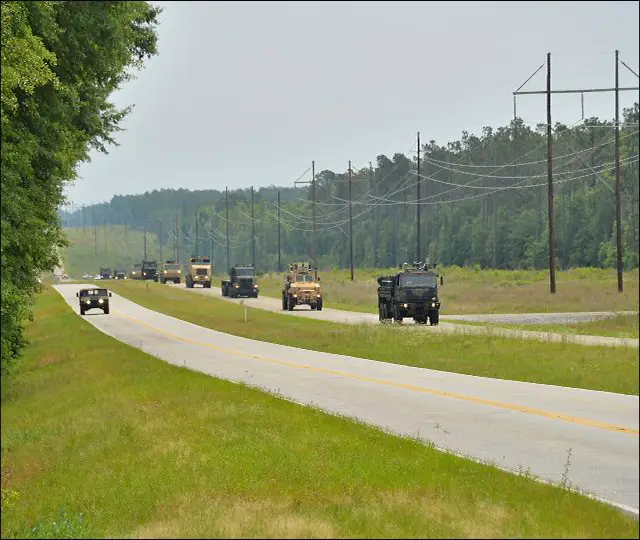| The second series of demonstrations of the Autonomous Mobility Appliqué System (AMAS) Capabilities Advancement Demonstration (CAD-2) tests were conducted at the Department of Energys Savannah River Site in South Carolina.
In the CAD-2 demonstration, AMAS completed a series of fully autonomous convoy tests involving a completely unmanned leader vehicle followed by a convoy of up to six additional follower vehicles (also fully autonomous) operating at speeds as high as 40 mph. The tests doubled the length and speed of convoys previously demonstrated under the program.
Vehicles used in the CAD-2 demonstration included one Family of Medium Tactical Vehicles (FMTV) truck, one Medium Tactical Vehicle Replacement (MTVR) vehicle, two Palletized Load System trucks, two M915 Line-Haul Tractors and one Heavy Equipment Transport.
I would describe these tests as a successful demonstration of the maturing capabilities of AMAS technology, said David Simon, AMAS program manager for Lockheed Martin Missiles and Fire Control. We will conduct further safety testing within the next month, and the program will execute a six-week Operational Demonstration in the July-August timeframe, during which time Soldiers and Marines will assess the system benefits in realistic convoy operations.
Earlier this year at Fort Hood, Texas, AMAS completed the first CAD series of tests, simulating driverless tactical vehicles navigating hazards and obstacles such as road intersections, oncoming traffic, stalled and passing vehicles, pedestrians and traffic circles in both urban and rural test areas.
The AMAS hardware and software are designed to automate the driving task on current tactical vehicles. The Unmanned Mission Module part of AMAS, which includes a high-performance LIDAR sensor, and additional algorithms, is installed as a kit and can be used on virtually any military vehicle. |















